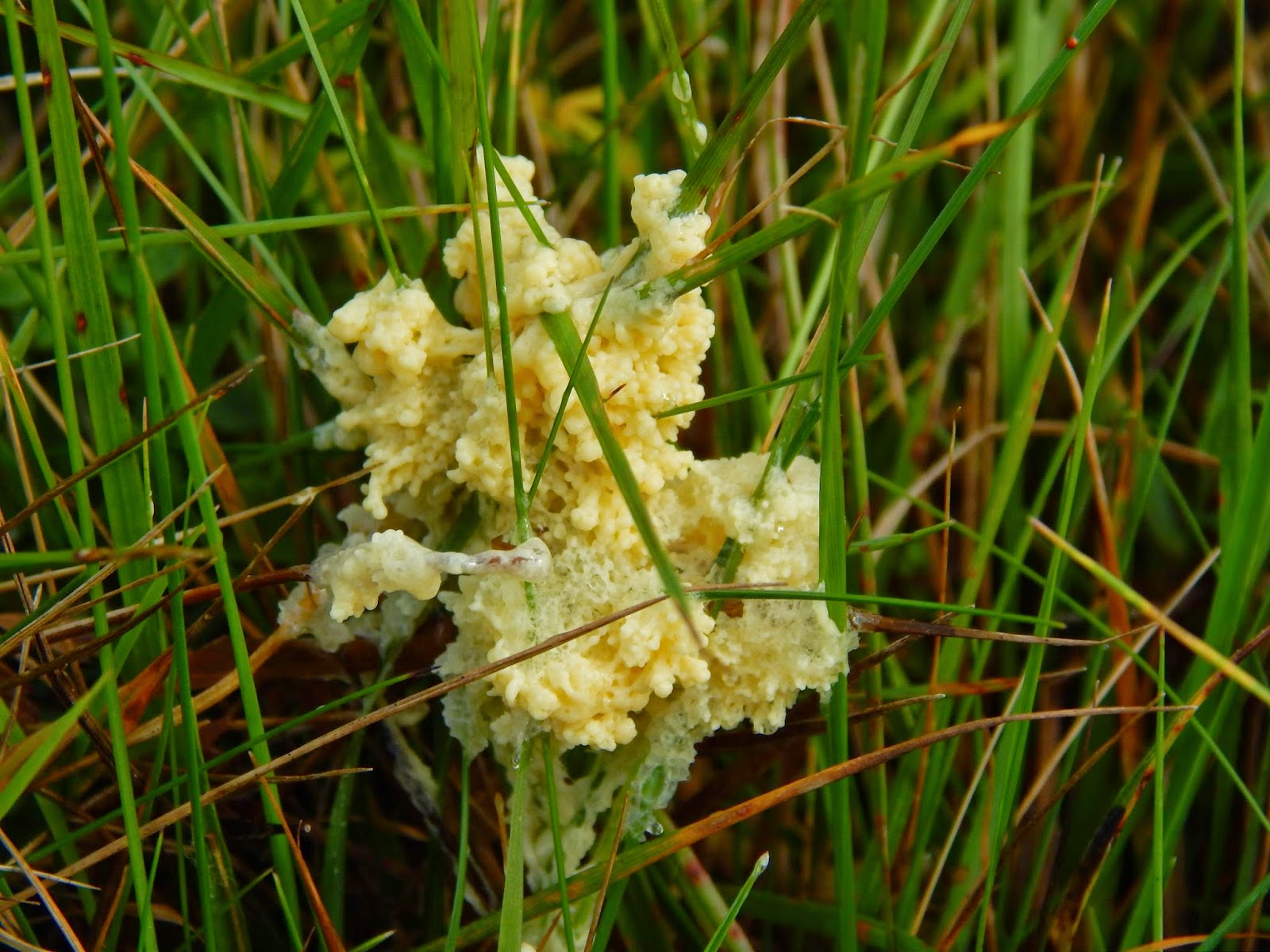Steve Blacksmith, Peachysteve and myself joined Jim Horsfall and Kara Jackson from Yorkshire Wildlife Trust on Friday
for their annual foray to record and survey the fungi found growing in the unimproved grasslands.
Members of the public were also invited and thrirteen of us attended in total.
On Saturday, Peachysteve and I joined Mytholmroyd Walkers Action, a trip that was organised by Rose Wheeler and myself.
Everybody who attended was very interested and enthusiastic and they were a pleasure to take out.
The children had lots of fun finding lots of specimens of fungi and they were very good at it too.
Shown below are a few photographs of some of the fungi that we saw during our time in the reserve .
Heath Waxcap (Hygrocybe laeta) above and below.
It is so slimy it is hard to pick up.
It is so slimy it is hard to pick up.
Yellow Club (Clavulinopsis helvola) above and two below.
Spores with long apiculus. 5-7 x 4-5 microns.
Cedarwood Waxcap (Hygrocybe russocoriacea) above and below.
The scent of cedar wood was quite strong and pleasant.
The scent of cedar wood was quite strong and pleasant.
Scarlet Waxcap (Hygrocybe coccinea).
Mulcilago crustacea.
Liberty Cap/Magic Mushroom (Psilocybe semilanceata) above and below.
Conifer Mazegill (Gloeophyllum sepiarium) above and two below.
It has a lovely fan shaped, furry looking cap...
and ochre maze-like pores.
We found a couple of large specimens of Pink Waxcap (hygrocybe calyptriformis).
Hygrocybe vitellina - above and below.
Hedgehog Scalycap (Phaeomarasmius erinaceus) above and below.
False Deathcap (Amanita citrina) above and below.
The gills were covered in hundreds of tiny invertebrates.
Butter Cap (Rhodocollybia butyracea).











.jpeg)
.jpeg)
.jpeg)
.jpeg)
.jpeg)
.jpeg)
.jpeg)
.jpeg)
.jpeg)
.jpeg)
.jpeg)
.jpeg)

.jpeg)

.jpeg)
.jpeg)
.jpeg)
.jpeg)
.jpeg)
.jpeg)

.jpeg)










.jpeg)
.jpeg)

_edited-1.jpg)
.jpeg)
.jpeg)

.jpeg)

.jpeg)
.jpeg)
.jpeg)
.jpeg)
.jpeg)
.jpeg)